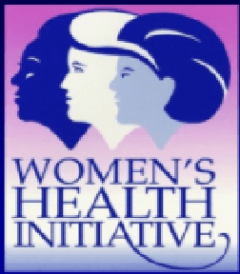 Common daily activities done by older, such as walking to the mailbox, strolling around the neighborhood, folding clothes and straightening up the house, likely improve their health.
Common daily activities done by older, such as walking to the mailbox, strolling around the neighborhood, folding clothes and straightening up the house, likely improve their health.
Results from the Objective Physical Activity and Cardiovascular Health (OPACH) Study, an ancillary study to the WHI, recently published in the Journal of the American Geriatrics Society showed women ages 65-99 who engaged in regular light intensity physical activities had a reduction in the risk of mortality.
The 6,000 women in the OPACH study wore an activity-measuring device called an accelerometer on their hip for seven days while going about their daily activities and were then followed for up to four and a half years. Results showed that just 30 additional minutes of light physical activity per day lowered mortality risk by 12 percent while 30 additional minutes of moderate activity, such as brisk walking or bicycling at a leisurely pace, exhibited a 39 percent lower risk. “The finding for lower mortality risk associated with light intensity activity truly is remarkable”, said Mike LaMonte, the lead author and Research Associate Professor of epidemiology at the University at Buffalo. “We anticipated seeing mortality benefit associated with regular moderate-to-vigorous intensity activity, as supported by current public health guidelines. But, observing significantly lower mortality among women who were active at levels only slightly higher than what defines being sedentary was such a novel finding with important relevance to population health.”
Current national public health guidelines recommend 150 minutes of moderate to vigorous physical activity a week for adults. The guidelines recommend persons 65 and older follow the adult guidelines to the degree their abilities and conditions allow.
“Our study shows, for the first time in older women that there are health benefits at activity levels below the guideline recommendations. It is imperative that future health guidelines recommend light physical activity in addition to more strenuous activity,” said Andrea LaCroix, Professor and Chief of the epidemiology division at the University of California San Diego, and senior author on the manuscript. “When we get up from the couch and chair and move around, we are making good choices and contributing to our health.”
Some people, because of age or illness or deconditioning, are not able to do more strenuous activity. “Current guidelines do not specifically encourage light activity because the evidence base to support such a recommendation has been lacking.” LaMonte said.
The bottom line? “Doing something is better than nothing” said LaMonte. “It’s not one size fits all. The paradigm needs to shift when we think about being active.”
Click here to read the full research article!
Lead author: Micheal Lamonte, University of Buffalo
 Co-authors include: David Bucher, University of Illinois; Eileen Rillamas-Sun, Lesly Tinker, and Chongzhi Di, Fred Hutchinson Cancer Research Center; Kelley Evenson, University of North Carolina; John Bellettiere, University of California San Diego; Cora Lewis, University of Alabama; I-Min Lee, Harvard University; Rebecca Seguin, Cornell University; Oleg Zaslovsky, University of Washington; Charles Eaton, Brown University; and Marcia Stefanick, Stanford University.
Co-authors include: David Bucher, University of Illinois; Eileen Rillamas-Sun, Lesly Tinker, and Chongzhi Di, Fred Hutchinson Cancer Research Center; Kelley Evenson, University of North Carolina; John Bellettiere, University of California San Diego; Cora Lewis, University of Alabama; I-Min Lee, Harvard University; Rebecca Seguin, Cornell University; Oleg Zaslovsky, University of Washington; Charles Eaton, Brown University; and Marcia Stefanick, Stanford University.
